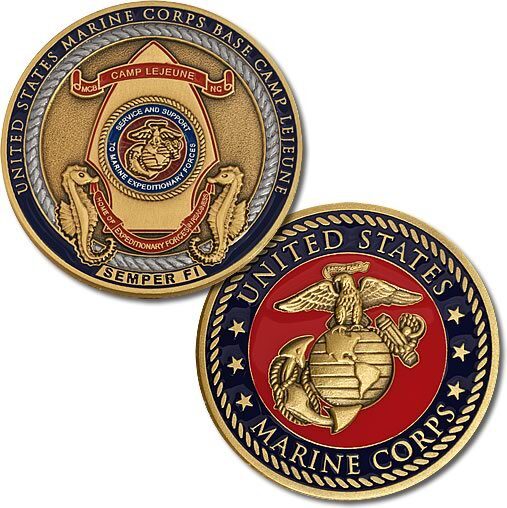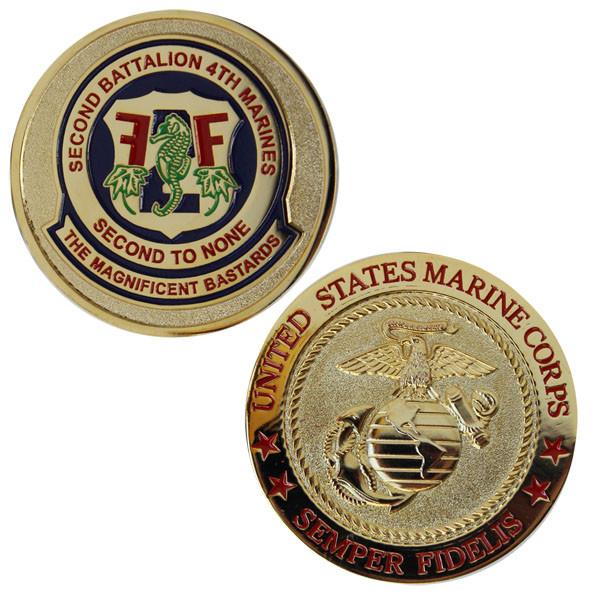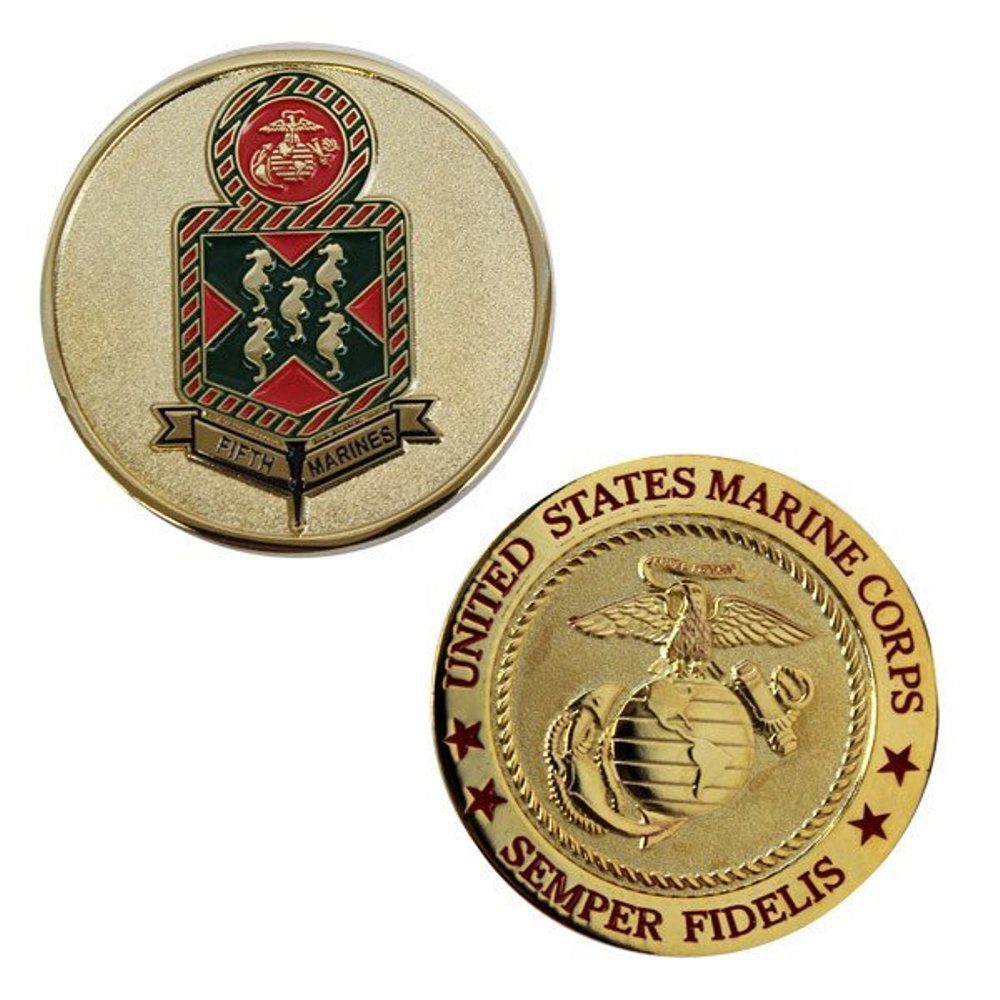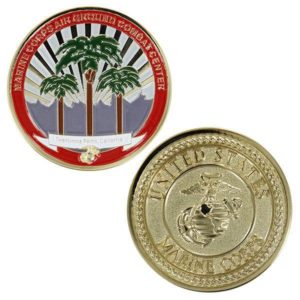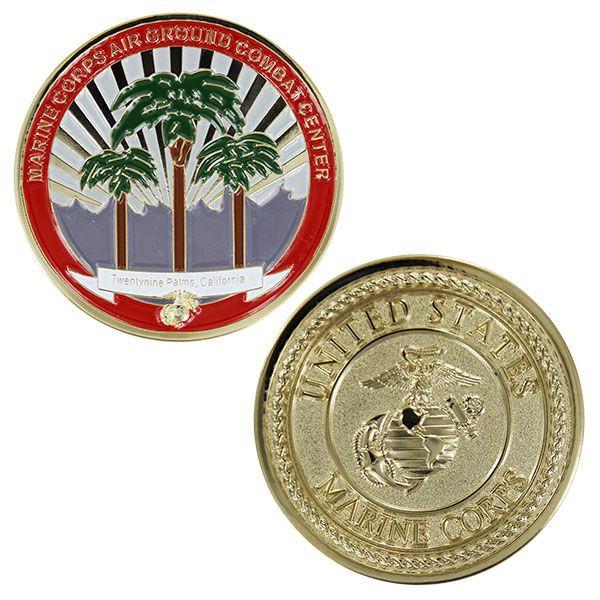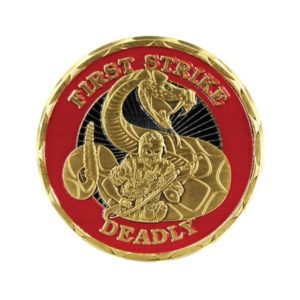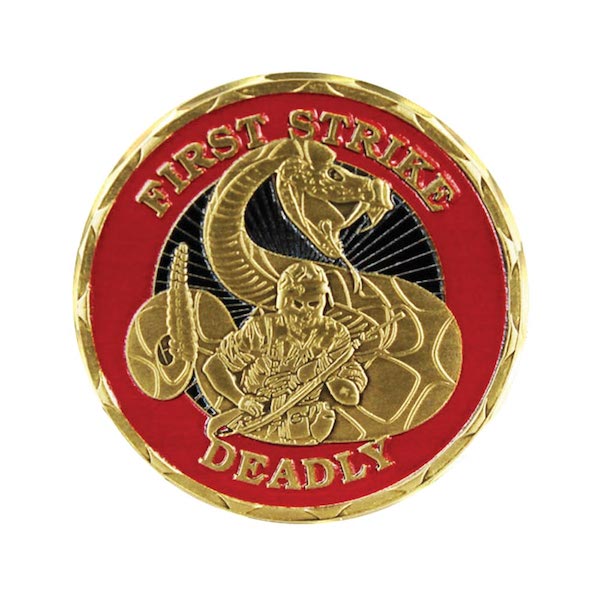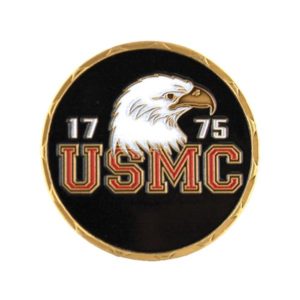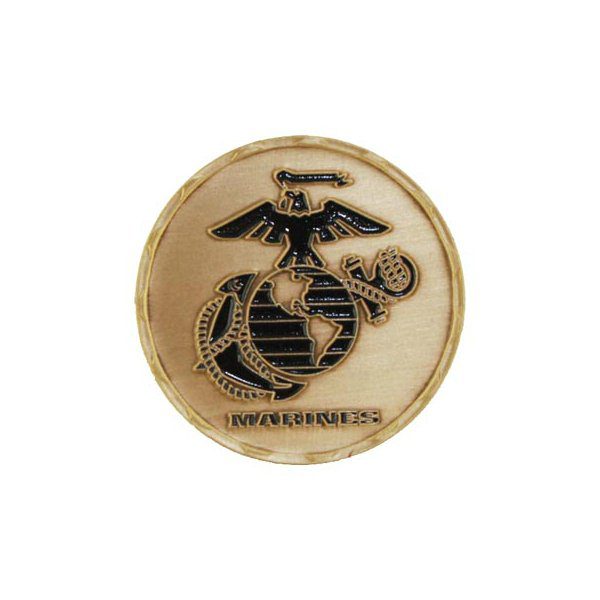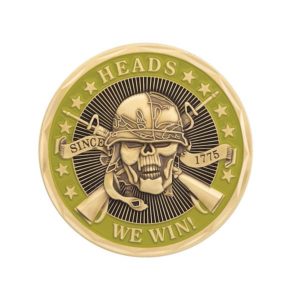Description
Marines who have been (or are) stationed at Camp Lejeune will be proud to carry and display this coin because of what it represents. Marines stationed here include Marine Corps Base Camp Lejeune, II Marine Expeditionary Force, 2nd Marine Division, 2nd Marine Logistics Group, and the naval hospital to name a few. Camp Lejeune’s mission is to maintain combat-ready units for expeditionary deployment.
This coin is minted in bronze, given an antique finish and finally embued with rich enamel colors. The front of the coin bears the Camp Lejeune insignia while the reverse bears the proud seal of the U.S. Marines.
Camp Lejeune USMC Challenge Coin Features
- Camp Lejeune Coin
- Measures 1.75″
- Professionally & individually packaged
- Made in the U.S.A.
- Licensed by the U.S. Marine Corps
Marine Corps Base Camp Lejeune
Marine Corps Base Camp Lejeune is located in Jacksonville, North Carolina. It’s a significant US military training facility renowned for its amphibious assault training capabilities. The facility, which includes 14 miles of beaches, is strategically positioned between two deep-water ports, Wilmington and Morehead City, facilitating rapid deployments.
Camp Lejeune comprises the main base and six satellite facilities: Marine Corps Air Station New River, Camp Geiger, Stone Bay, Courthouse Bay, Camp Johnson, and the Greater Sandy Run Training Area. Additionally, it houses a Marine Corps port facility at Beaufort on Radio Island. The base extends across 156,000 acres, offering extensive training grounds, including beaches suitable for amphibious operations, various gun positions, tactical landing zones, modern urban terrain training facilities, and an extensive array of live fire ranges.
Home to a range of USMC commands and units, Camp Lejeune is a vital center for military preparation and operations. Its resident commands include the II Marine Expeditionary Force, Marine Corps Forces Special Operations Command, and several Marine Divisions and Logistics Groups. The base also hosts educational institutions like the Marine Corps Engineer School and the United States Marine Corps School of Infantry.
Camp Lejeune provides diverse recreational and fitness facilities for Marines, sailors, their families, and civilian employees.
Historically, the base was approved for construction in 1941 and began as Marine Barracks New River. Initially headquartered in a summer cottage on Montford Point, it was later moved to Hadnot Point and renamed in honor of the 13th Commandant of the Marine Corps, John A. Lejeune, following his death. Notably, one of its satellite facilities, Montford Point, served as a boot camp for African American Marines during a period of segregated training, which was later integrated.
Today, Camp Lejeune stands as a testament to the Marine Corps’ commitment to readiness, training excellence, and community support.
Marine Corps Challenge Coins
Marine Corps challenge coins are deeply rooted in military tradition. They symbolize honor, camaraderie, and individual accomplishments in the USMC.
Military challenge coins trace their roots back to ancient Rome, where custom coins rewarded exceptional feats. They later evolved into “portrait medals” during the Renaissance.
In the early US military, challenge coins were exclusive to high-ranking officers recognizing exceptional achievements. Notably, in World War I, a pilot’s coin saved his life by proving his identity. Some argue that modern challenge coin traditions, including in the Marine Corps, originated during the Vietnam War for bar entry.
Today, these coins signify specific achievements or service excellence and carry sentimental value, serving as tokens of significant moments in a Marine’s journey.
Marine Coin Check, Traditions, and Rules
A coin check is a spontaneous challenge where members must promptly display their coins.
Rules for coin checks are informal, allowing challenges to occur anywhere, anytime, by displaying the coin and shouting “coin check!” Accidentally dropping a coin counts as a deliberate challenge. Responding within ten seconds by presenting a unit’s coin is essential.
Consequences add a playful element: failure to produce a coin results in buying drinks for the challenger and others. Conversely, a successful challenge requires the challenger to buy a round for the group.
The tradition also includes coin theft, with successful thieves earning a drink. Coins are typically carried for easy access, with a widely accepted rule of “a step and a reach.” Presentation often occurs subtly during handshakes, with modifications like drilling holes or attaching them to belt buckles invalidating their challenge status.


